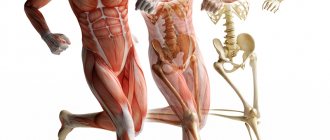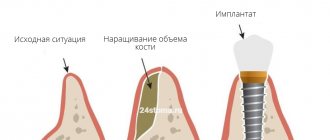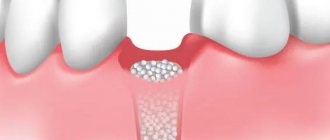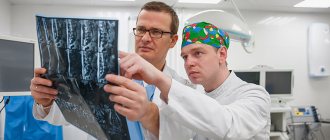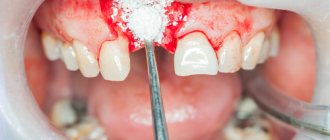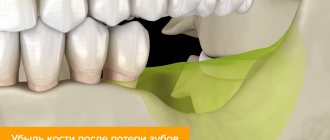What is platelet fibrin
Platelets
- flat, colorless blood cells that participate in clotting and help stop bleeding. When the integrity of a blood vessel is disrupted, platelets are destroyed and substances are released that form a blood clot or thrombus. In the 1980s, an additional property was discovered: the ability to accelerate the regeneration of damaged tissue. This occurs due to the release of peptide and steroid hormones (growth factors) that stimulate the restoration of old cells and the growth and division of new cells.
Plasma
- not just platelets, but enriched platelet fibrin. This is a pale yellow liquid formed after blood is centrifuged. It contains platelets and other biologically active substances:
- proteins (fibrin, formed from fibrinogen);
- lipids;
- hormones and hormone-like substances;
- amino acid metabolites;
- vitamins;
- minerals.
After the injection of autoplasma into the jaw bone, growth factors are activated and gradually released within 7 days. They improve the supply of oxygen to tissues due to the formation of a dense capillary network (neovascularization). Favorable conditions are created to normalize trophism, accelerate regeneration and activate cellular growth in the jaw bone.
Human plasma contains useful substances and is bioinert to tissues, because is a product of the same organism. For this reason, there is never any rejection or side effects from platelet concentrate injections. Injection of autoplasma provides a predictable course of the postoperative period.
APRF technique (osteoplasty)
In surgical dentistry, there are very often cases when it is necessary to achieve rapid tissue regeneration and replace bone defects and gum tissue. It is not always possible to achieve good results in a natural way, and long healing periods entail a greater likelihood of complications.
The innovative patented APRF technique is a biocompatible method for rapid tissue regeneration that uses the patient's own blood.
What is APRF?
APRF is the English abbreviation for Advanced Platelet Rich Fibrin. Its regenerative properties are based on high biological healing mechanisms, which are based on the ability of fibrin clots to release growth factors from platelets and leukocytes, which stimulate the growth of new cells and blood vessels.
Before the APRF technique, there was a conventional PRF technique, but it did not have the same results. What is this connected with? Numerous studies have found that regeneration requires not only a fibrin clot, but also an optimal balance between fibrin, cytokines, leukocytes and platelets. Fibrin is a kind of activator of platelets and cytokines, which gives them therapeutic potential.
When using both PRF and APRF techniques, approximately the same mass of platelets is obtained; there are only differences in the number of leukocytes, which provides the APRF technique with therapeutic advantages. The fastest regeneration of bone tissue with this method of obtaining platelets occurs due to the slow release of leukocytes.
What is the slow release of leukocytes achieved with the APRF technique?
This technique uses special disposable sterile tubes. In addition, there is a special centrifuge with specified parameters and a certain centrifugation time. All this ensures the receipt of the maximum number of platelets, leukocytes and growth factors in the fibrin matrix, which ensures high regenerative ability.
With the APRF method using special tubes, the amount of growth factors increases by 2-3 times compared to the conventional PRF method. As a result, treatment time is reduced to 2 weeks with the formation of 2.5 times more vessels. All these data are confirmed by clinical studies.
Features of centrifugation
To obtain APRF, a special APRF DUO centrifuge is used. Its advantage and peculiarity is that you do not need to set the parameters manually; special modes are automatically installed on it and also automatically switched.
When using another centrifuge, you must set the parameters manually. To obtain APRF, the rotation speed is 1300 rpm and the time is 8 minutes.
Another undoubted advantage of APRF is that it does not require the use of anticoagulants to obtain fibrin clots.
How do you receive an APRF?
The technique occurs immediately before the operation; the surgeon can perform it; special training is not required to perform it. Sterile tubes allow this to be done directly in the operating room. Blood is taken from the patient’s vein using a vacuum method and the tubes are placed for centrifugation in a certain mode. Then, using a special press, dense and elastic membranes are obtained from the clots, which can be used as a plastic material for filling surgical defects and as a good alternative to collagen membranes.
Benefits of APRF
- 100% autogenic due to the use of the patient’s own blood;
- low cost of finished membranes - about $1.5-2 per membrane;
- ease of implementation and no need for special training of the surgeon;
- rapid tissue regeneration due to the slow release of leukocytes;
- original sterile test tubes;
- reducing the number of complications due to fast healing times;
- an alternative to harvesting a connective tissue graft.
Application area of APRF
The APRF technique has proven itself well and is widely used in maxillofacial surgery and implantology.
- reconstructive surgeries on the jaw (guided bone regeneration and sinus lift);
- periodontal surgery;
- closing bone holes after tooth extraction;
- in performing patchwork operations;
- closing perforations of the maxillary sinus;
- closing gum recession, defects in the palate and soft tissues;
- stimulation of the growth of new vessels - angiogenesis;
- for hemostasis - stopping bleeding;
- to obtain bone haft.
How to obtain membranes from blood plasma - plasmapheresis procedure
Plasma therapy uses not venous blood taken from the patient, but centrifuged plasma isolated from peripheral blood. The condition of soft and bone tissues is improved through the injection of autoplasma. This autoplasma is also called PRP (platelet-rich plasma), platelet concentrate or gel.
The best results are obtained from plasma containing at least 1 million platelets per 1 μl. To obtain such a concentrate, a plasmapheresis procedure is performed:
- 15-20 ml of blood is taken from the patient’s dental office from the ulnar vein.
- A test tube with blood is run twice in a separator centrifuge for 15 minutes. This is done to separate excess fractions containing red blood cells and white blood cells.
- Fractions used in dentistry - plasma and fibrin clot - are taken from the test tube.
Platelets, fibrin and other biologically active substances are concentrated, forming thick autoplasma (platelet gel). The resulting concentrate is injected into the marginal gum, dentogingival papilla or transitional fold.
In addition, a fibrin clot (blood plasma membrane - PRF membrane) is formed in the test tube. Such a membrane can be cut and stitched for use in various techniques - osteoplasty, tooth extraction surgery after extraction to stimulate reparative processes in the socket.
Membranes for bone grafting are stored for no more than four hours, so plasmapheresis is performed on the day of surgery.
How is the substance obtained?
PRF is obtained directly in the clinic.
To do this, a small amount of blood is taken from the client and placed in a test tube, which is installed in a PRF centrifuge, where the blood is separated into parts:
- plasma;
- red blood cells;
- fibrin clot.
The latter is placed in a special box, where it will take the form of a membrane with a certain thickness.
Depending on the direction of use, specialists receive two types of membranes: I-PRF and A-PRF.
The first is used in situations where it is necessary to literally save tissue from further destruction. It is mixed with a substance that replaces the bone structure, and then injected into the periodontal tissue. As a result, blood circulation improves, the edges heal better, and the gum tissue is restored.
A-PRF membrane is called advanced because it was developed relatively recently based on traditional technology. Used to cover bone materials, eliminate palate defects, and during surgical interventions.
Membrane production technology on video:
Application of PRF membranes for bone tissue growth
Membranes from blood plasma are not used as a separate method of osteoplasty - they are not enough to replenish the size of bone tissue in full. But they are used to prepare jaw tissue for implantation when the bone structure is unsatisfactory, preventing the installation of an implant of sufficient length. Used as an addition to osteoplastic operations (independent or prior to implantation):
- sinus lift;
- alveolar ridge augmentation;
- bone block transplantation;
- guided bone regeneration.
Splitting of the alveolar ridge Increasing the volume of bone tissue in width by adding osteomaterial inside the alveolar process
Guided bone regeneration The lack of tissue is filled with a bone substitute, which is secured with a membrane. Use proprietary or synthetic materials
Sinus lifting A bone grafting method aimed at increasing the volume of bone tissue in the upper jaw in the area of the maxillary sinuses
When osteoplasty and implantation are performed simultaneously, the membrane accelerates the processes of osseointegration and stabilization of the implant. This is an effective way to activate the process of fusion of bone materials and implants with the jawbone, since the platelet concentrate contains tissue cell growth factors in large quantities. Membranes are also used for immediate installation of implants into the socket of an extracted tooth.
Benefits of using blood plasma
The use of PRF membranes allows for natural stimulation of the growth of jaw bone cells or periodontal tissues, which significantly accelerates their growth processes. Rehabilitation and engraftment of implants or bone material occurs faster, and the risks of inflammatory processes are significantly reduced.
The use of blood plasma has a positive effect on the following processes:
- acceleration of bone tissue cell growth after implantation,
- absence of allergic reactions that may occur when using artificial materials,
- rapid healing of soft mucous membranes after installation of dental implants or plastic surgery,
- prevention of the risk of peri-implantitis after implant installation,
- reduction of tissue swelling, reduction of pain after any surgical interventions,
- rapid tissue restoration after tooth extraction,
- reduction of inflammation during gum curettage and cleaning of gum pockets.
Expert opinion
Nikolay Vladimirovich Namdakov Maxillofacial surgeon, implantologist, orthopedist Work experience 17+
“The specialists of our clinic have been actively using this technology in their work for many years - they have completed the necessary training and know hematology, understand the mechanisms of blood clotting. Therefore, we do not encounter any difficulties in working with this equipment. Each person has his own characteristics of both the body and the circulatory system, so we use a strictly individual approach even in such a matter as obtaining PRF membranes.”
Why else is plasma lifting done in dentistry?
In addition to osteoplasty, plasma lifting in dentistry is used in the following cases:
- generalized or localized chronic periodontitis and periodontal disease, gingivitis, resistant to other conservative dental treatment methods;
- traumatic extraction of teeth or during reposition of jaw bone fragments as a result of trauma to the maxillofacial area;
- prevention of peri-implantitis, alveolitis and periodontal inflammation;
- to accelerate tissue regeneration after vestibulo- and gingivoplasty.
How to install a barrier membrane?
The innovative method of using a barrier membrane requires certain experience from the dentist, as well as clear knowledge of the technique of performing the stage. The structure is fixed as follows:
- Performing local or general anesthesia with the addition of sedatives (the last point is not always necessary);
- An incision in the outer soft tissues of the gums and moving them away from the bone of the alveolar process;
- Replenishment of the required amount of bone tissue using one of the previously selected methods;
- Fixing a modern structure made of collagen or metal with special titanium screws to adjacent teeth or to the jaw bone itself;
- Repositioning the soft gum tissue and securing it with surgical sutures.
When using a membrane that does not dissolve, after a certain time almost all steps are repeated to remove the structure.
A prerequisite for the patient’s successful recovery is careful oral care in the postoperative period. A person must maintain personal oral hygiene and follow all recommendations of the dentist. It is also important to quit smoking a few days before surgery and for the entire rehabilitation period.
Benefits of plasma lifting
- Safely.
Plasmolifting is carried out without the use of antibiotics and synthetic drugs. Only the patient’s own resources are used, so the risk of infection or allergic reactions is minimal. - Without pain.
The procedure is performed under local anesthesia, so discomfort and unpleasant sensations are excluded, and the injection of plasma is painless. - Fast.
Plasmolifting is performed on an outpatient basis and takes about 30 minutes, including blood sampling. In this case, the result appears within a few days. - Without consequences.
The procedure causes virtually no side effects and can be used as part of complex therapy. The likelihood of adverse reactions to plasma lifting is minimal. - Effective.
The introduction of platelet-rich plasma instantly activates the healing and regeneration processes. The result achieved from therapy persists even after completion of treatment. One course of injections provides lasting improvement.
Under the influence of plasma, soft tissue cells begin to grow, maintaining gum health.
Types of resorbable membranes
Resorbable membranes are called absorbable membranes, for the production of which the following materials are used.
- Polymers that can retain their properties for several months. Their advantages include a low risk of developing allergies and inflammation.
- Material of animal origin, characterized by high biocompatibility with human jaw tissue. Such membranes are used less frequently, as they can cause allergies.
Before installing barrier membranes, the patient undergoes a thorough examination to eliminate the risk of complications.
